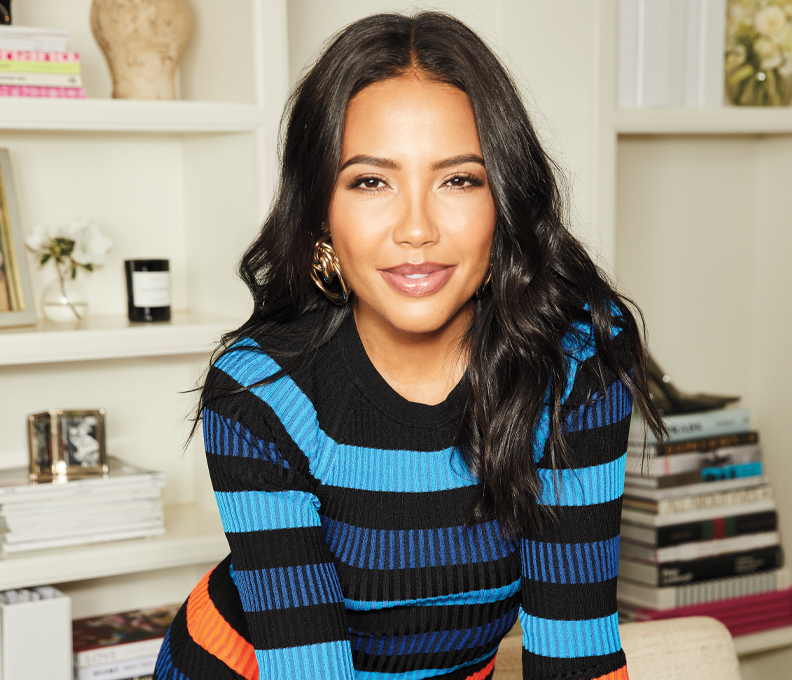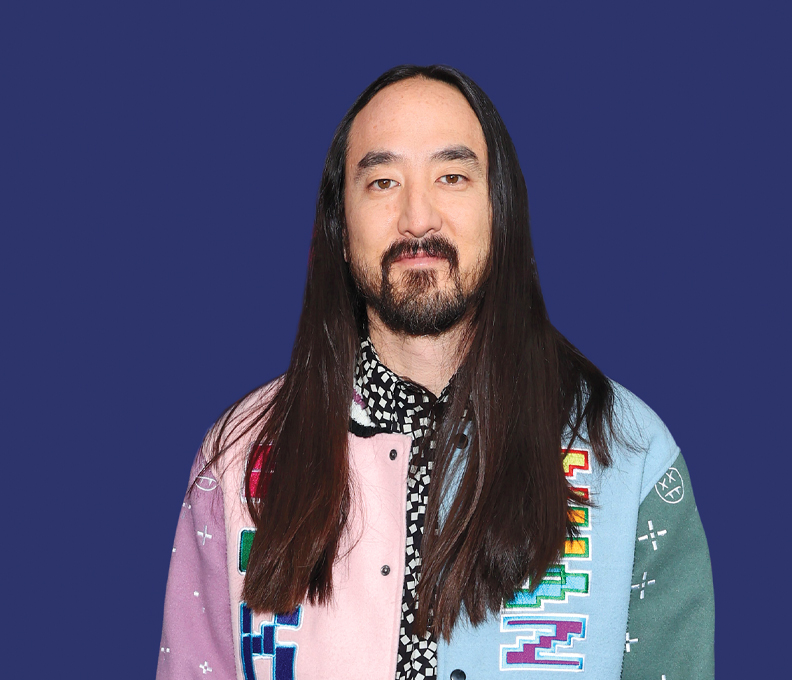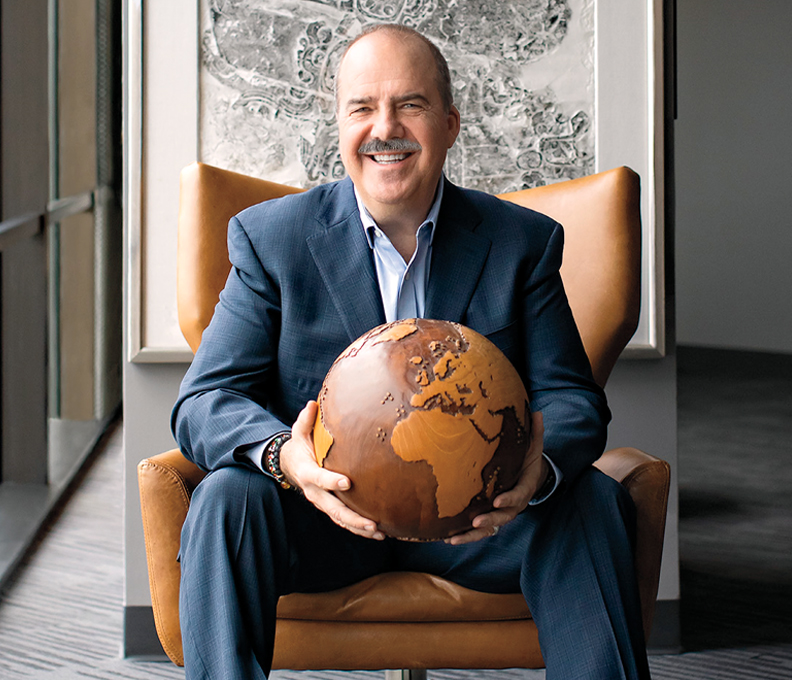“A Hell of a Ride”: Richard Branson’s Travel Industry Takeover
From London to New York to Miami and beyond, Branson’s Virgin Group immerses guests in the brand’s signature vibe in its aircraft, hotels and cruise ships. Meet the flamboyant visionary who dreamed it all
June 1, 2023

Richard Branson / Photo: Courtesy of Peggy Sirota
On the 39th floor of the just opened Virgin Hotel in New York City’s upscale NoMad neighborhood, Richard Branson saunters into an event space that has been designed to highlight one of Manhattan’s most iconic sites: the Empire State Building, which rises majestically against a brilliant blue sky, and indeed seems so close that Branson might reach out and touch it. This Midtown view has occupied a corner of Branson’s mind since he arrived in New York via the inaugural flight of his Virgin Atlantic airline. On June 22, 1984, Branson famously leased a 747-200 and christened it the Maiden Voyager. The plane departed London’s Gatwick Airport and touched down hours later at Newark Liberty International Airport. With the 40th anniversary of that milestone on the horizon, what would he tell his 32-year-old self about opening a hotel just steps from one of the most legendary examples of American architecture? Branson smiles as he takes another look at the view: “I’d say, ‘Just keep pinching yourself, because it’s going to be a hell of a ride.’”

Richard Branson greeting the press before the first Virgin Atlantic flight aboard the Maiden Voyager from London to New York, June 22, 1984 / Photo: Courtesy of Virgin Atlantic
Sixteen years after that game-changing flight, the British entrepreneur who had already conquered the music industry before founding his own airline became Sir Richard Charles Nicholas Branson during an investiture ceremony at Buckingham Palace, led by the man who is now King Charles III. “Virgin tycoon is knighted,” the BBC announced, and anyone who didn’t immediately know the identity of that story’s subject clearly wasn’t paying attention. By then Branson had thoroughly burnished his image as a high-wattage CEO who didn’t enjoy boardrooms as much as he relished scaling Europe’s Mont Blanc or crossing both the Atlantic and Pacific in high-tech hot-air balloons. His daredevil reputation was further solidified by stunts including a 2004 trip across the English Channel in a Gibbs Aquada, the high-speed amphibious vehicle, setting a Guinness World Record in the process. And in 2007, he used a rappelling rope to jump off the Las Vegas Palms hotel while wearing a tuxedo, a promotion for a new Virgin Atlantic route into the Nevada gaming capital.
That sense of unabashed fun wasn’t only deeply engrained in Branson’s rock-star persona. It also served a purpose, to convey the message that the spirit of adventure can be injected into every experience, travel most of all. Branson says he was cognizant of this idea as he expanded Virgin Atlantic, not only in the airline’s routes and number of flights but also in its details. From the beginning, he also knew that Virgin would have to take on and even at times outmaneuver the U.K. flag carrier, British Airways, which soon recognized the upstart airline as a threat. In the 1990s, Virgin secured slots at Heathrow and Tokyo Narita—even snagging some former BA gates—and doubled down on racy marketing campaigns that emphasized the airline’s high-spirited vigor, its phrase “jetrosexual” a cheeky rebuke to the legacy brand’s supposed stodginess. In 1997, when BA removed the Union Jack from its livery, Virgin quickly added it, declaring itself the U.K.’s new “flag carrier.” And in 2009, during the economic recession, Branson stated that the government should not bail out BA in case of a collapse, continuing the two airlines’ rivalry.
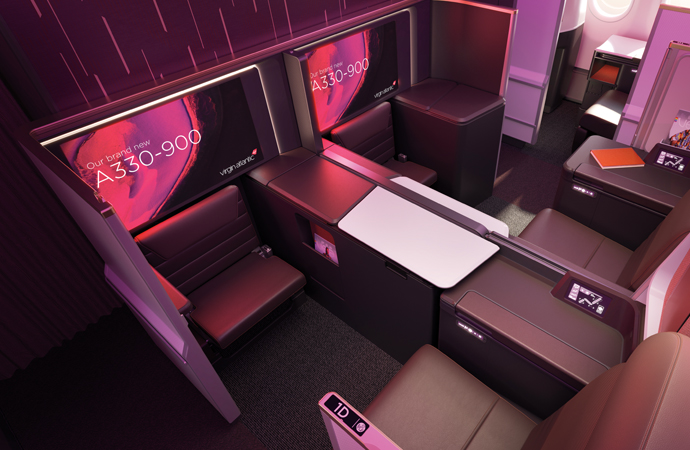
Virgin Hotel Dallas; Upper Class cabin on Virgin Atlantic’s new A330-900 / Photo: Courtesy of Virgin Atlantic
Today, Virgin Atlantic continues to rank high on frequent-traveler lists for its thoughtful attention to amenities, from the onboard cocktail bars and social spaces to the “sleep suit” pajamas presented to Upper Class passengers. Other airlines, meanwhile, implemented details over the years that debuted on Virgin flights, from fully flat beds in business class and TVs in all seats to the concept of premium economy and the Wonder Wall snack section between business and premium cabins. Virgin was also among the first airlines to offer what is now considered a staple on flights: onboard Wi-Fi.
Branson prides himself on Virgin’s sustainability practices, a philosophy put in place in 2011. “In any decision we make, we’re going for the cleanest and newest planes,” he says. “And we will continue to innovate and try to keep that over the next 40 years. We have a flight coming up that will use completely clean fuels. It’s still a way to go before we can get all flights that way, but it’s setting a trend in the right direction.”
Branson likewise led the pack with one key belief, that stepping onto the plane isn’t the beginning of a traveler’s experience. “That was our thinking when we created the Upper Class lounge at Heathrow,” he explains of the 8,200-square-foot venue—housing both the Virgin Atlantic Clubhouse and Revivals Lounge—which among other niceties allows arriving passengers to shower and enjoy breakfast while their clothes are being pressed. “Other airlines have tried to copy that lounge and they’ve never pulled it off. It’s been there for 20 years and it’s still the best lounge in the world.”
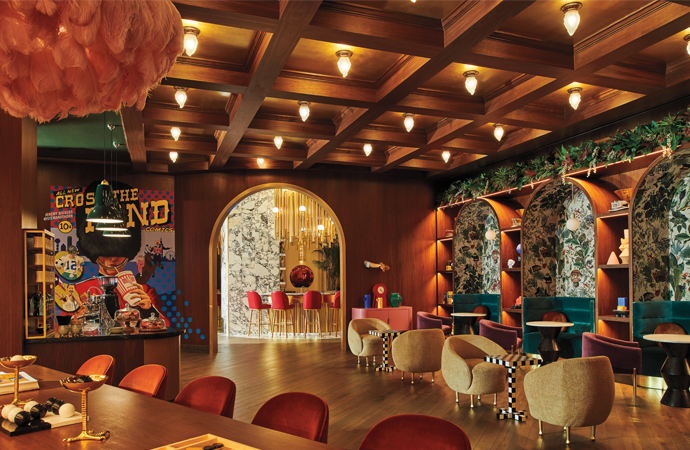
Virgin Hotel Dallas / Photo: Courtesy of Virgin Hotels
That paramount desire to provide a comprehensive experience also enabled Branson to make the transition into other areas of travel and hospitality. He created the Virgin Hotels brand in 2010 and debuted its first property five years later with Virgin Hotel Chicago, featuring 250 rooms and located in the historic Old Dearborn Bank Building, a renovation that cost $89.7 million. “We do the hotels with partners, including a wonderful guy named John Lam,” says Branson, name-checking the chairman and CEO of the New York-based Lam Group. “He’s been a great partner with us and built a number of really great hotels, but we also knew we could bring the Virgin team experience. The combination of the two have made it pretty special.”
The Chicago opening was followed by Virgin Hotels in San Francisco, Dallas, Nashville, New Orleans and Las Vegas, as well as properties in both Edinburgh and Glasgow, Scotland, as the company’s first two international entries. It’s notable that none of these locations felt rushed in the planning, while each also aligns with Virgin’s overall branding, dominated by the company’s signature red. Ultimately that careful growth and distinct visual codes, coupled with an open-borders approach that allows the various Virgin brands to work together effortlessly, create a company culture that’s very much by design.
James Bermingham, CEO of Virgin Hotels, agrees. “We have a terrific relationship with our sister company,” he says. “We collaborate by focusing on multiple things. We share a lot of the same customers, travel advisors and wholesalers, and Virgin Atlantic has a very sophisticated sales network that’s been around a lot longer than the Virgin Hotel sales team. I believe we have the most powerful brand in the hotel industry.” That also extends to Virgin Group’s loyalty and rewards programs—The Know and Virgin Red, respectively—which not only allow passengers and guests to personalize their preferences, but also reward members with benefits across all Virgin companies.
Given New York’s place within Virgin Atlantic’s history, why wasn’t the city chosen as the first U.S. location for a Virgin Hotel? Logistics and planning are the chief reasons, but it’s also easy to believe that this was the location where Branson wanted to get every detail of his hotel statement exactly right. And there’s no denying he’s thrilled to open the doors on an experience he knows is long overdue. “Over the last 39 years, people kept saying, ‘You know, we love being loyal, we love flying on Virgin Atlantic. But when you get us to New York, you dump us on the street,’” Branson says. “And hotels by and large in New York are really dingy. So it’s taken us a long time to finally sit here in this hotel.”
Boasting 460 rooms, including 39 suites—rooms are dubbed “chambers” in company parlance—the 39-story hotel is located at the southwest corner of 30th Street and Broadway and indeed was conceptualized with light, views and a convivial vibe in mind. “We wanted to find a site that was very central, and being just off Times Square and on the edge of Broadway is fantastic,” Branson noted during the hotel’s grand opening in April. “Doing the build from the ground up, rather than renovating an existing building, was also important. So yes, it feels light and bright and breezy, with spectacular views.” A 2,800-square-foot two-bedroom duplex penthouse suite is located on the 35th and 36th floors, and when Branson isn’t staying in the space that’s known as Sir Richard’s Flat, it’s also available for bookings so guests may enjoy the same 24-foot floor-to-ceiling windows, custom artwork and other amenities designed for the company’s owner.
Women staying in Branson’s hotels are also always top-of-mind. “Each room needed to be female-friendly, because hotels don’t think enough about women during the design phase,” Branson says. “Our team spent a lot of time thinking about how women use the sink and mirrors and lighting, for example. Also, when you walk down the corridors of some hotels, they’re not lit and can feel quite ominous, but at a Virgin Hotel, they’re bright and welcoming.”
On the hotel’s third and fourth floors, meanwhile, Everdene is a restaurant and bar offering seating both indoors and outdoors, once again taking advantage of the local scenery. “We wanted to make sure the entertainment was the best and the rooftops are great, and while there are still a few things to be finished, we’re nearly there,” Branson says. “When you open something completely new, there are still boxes to be ticked, but I’m very happy.”
Even as opening activities were in full swing—Broadway star Colton Ryan performed “New York, New York” prior to the hotel’s ribbon-cutting ceremony—Branson remained laser-focused on the details, keeping a small notebook in his back pocket dedicated to jotting down elements that should be addressed. At the new hotel, his notes included a reminder that the elevators were missing a small sign showing guests where to insert their room keys to reach their floors. Branson employs this notebook for every travel experience—even aboard his trip on Virgin Galactic, the suborbital passenger-flight experience founded in 2004 as the company’s entry into space tourism.

Colin Bennett, Beth Moses, Sirisha Bandla and Branson on the day of the Virgin Galactic Unity 22 spaceflight, July 11, 2021
Branson laughs when asked if he pulls out his notebook in zero gravity. “I was enjoying it too much to actually do it while I was there, so I waited until I got back and scribbled some things down,” he says. “But yeah, when I went to space, I came back with a list of 20 things to improve, like the color of the seat belts and parachutes and parachute straps. By experiencing your products, you can come across little things that maybe someone who’s very close to a product might not see, and that’s ultimately what a boss should be doing.”
Still, as the face of Virgin across all its platforms, its founder has witnessed the good times as well as the bad, the most perilous of which was the recent Covid outbreak and worldwide lockdown. “It really looked like we were going to lose everything,” Branson told the BBC’s Amol Rajan last month. Virgin’s planes were grounded and its hotels closed. “The worst would have been 60,000 people out on the streets. I was certainly a little depressed.” He even faced a personal backlash when Virgin sought financial help from the government, with critics implying a billionaire who owns a private Caribbean island should not be seeking public funds. “I never experienced coverage quite as painful as that.” Though the government declined the request, Virgin ultimately benefited from a £1.2 billion rescue plan that was approved by shareholders and banks.
On the heels of Branson celebrating the opening of his New York hotel, he was headed to Miami to explore the details of his latest on-brand travel experience: Virgin Voyages, an adults-only cruise line that launched in 2021 and, like the airplanes and hotels that came before it, seeks to transform consumer expectations in the category. Branson is quick to credit the members of his team and the 1.5 million employees who have worked for Virgin over the years as the source of his company’s success, and Virgin Voyages is no exception.
“There we really did get involved with a lot of wonderful people,” he says. “We took a big sheet of white paper and wrote down all the things people loved about cruises, and what they hated, and went from there.”
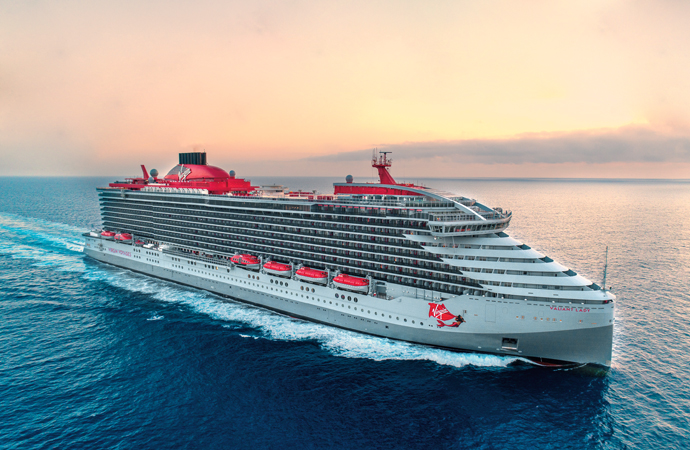
Virgin Voyages’ Valiant Lady cruise ship / Photo: Courtesy of Maritime Filming, UK
Sailing out of PortMiami, the line’s flagship, the Scarlet Lady—the name is an homage to one of the earliest planes in the Virgin Atlantic fleet—has won raves for delivering a luxury experience that abandons old-school cruising rules. Aboard the Scarlet Lady, passengers don’t have to worry about dressing for dinner or assigned seats with strangers. Instead, they can choose from more than 20 dining choices including The Wake, a glamorous steak and seafood room, the Italian-themed Extra Virgin or The Test Kitchen, which blends the ideas of a high-end restaurant with culinary education and experimentation.
Virgin Voyages also embraces sustainability practices including the elimination of single-use plastics and the use of responsibly sourced items such as direct-trade coffee. Ships employ Climeon, the power system that converts waste and geothermal heat into clean electricity. These and other initiatives are part of Branson’s goal to ensure Virgin Voyages achieves net-zero carbon emissions by 2050.
Recreation, meanwhile, includes not only the expected swimming pools and spas, but also a focus on wellness via experiences such as sunrise and sunset yoga on The Perch, a sundeck that offers 360-degree ocean views. More adventurous guests can indulge in everything from Squid Ink, the first-ever tattoo parlor onboard a cruise ship, to The Groupie, a Japanese-style karaoke, gaming and movie lounge designed by Roman Coppola. Branson also has partnered with Jennifer Lopez, who holds the title of Virgin Voyages’ chief entertainment and lifestyle officer and has created programs focused on empowering women via Limitless Labs, the philanthropic initiative she created to support Latina entrepreneurs and small businesses. “She loves what we’re doing and I love what she’s doing,” Branson says of Lopez. “She also has a fantastic following, which is always helpful when you’re launching a cruise company out of Covid.”
The reaction to Virgin Voyages has been undeniably impressive. In March, the line captured the top five awards in the Large Ship category at the 11th annual Cruise Critic Cruisers’ Choice Awards, including Best Overall and Best Dining. “The team really delivered, because the company won every award, and justifiably so. It’s brilliant,” Branson says.
And yet another Virgin Voyages element has been designed to delight passengers. In February the company debuted Terminal V, an airy, three-story space of glass and steel that welcomes Scarlet Lady guests in style while offering unobstructed views of Biscayne Bay and the Miami skyline. Designed by award-winning firm Arquitectonica, Terminal V blends the city’s tropical vibe with Virgin’s unmistakable branding and, like every travel adventure Branson has conjured, seeks to surpass passenger expectations about what awaits them.
With a Virgin Hotel planned to open in Miami’s tony Brickell neighborhood in 2025, Branson says he anticipates a full-circle experience for Virgin consumers. “If you happen to be in London, you can go to Heathrow, enjoy the Upper Class lounge, get on a Virgin flight to Miami and stay in a Virgin Hotel, and then go to the terminal and have a wonderful experience there before embarking on your Virgin Voyage,” he says. “We’re trying to make the whole experience seamless. Everything is about a positive progression, with the best airline, the best hotels, the best cruise company. And so far, it seems to have worked.”
Enrique Perrella contributed reporting.
